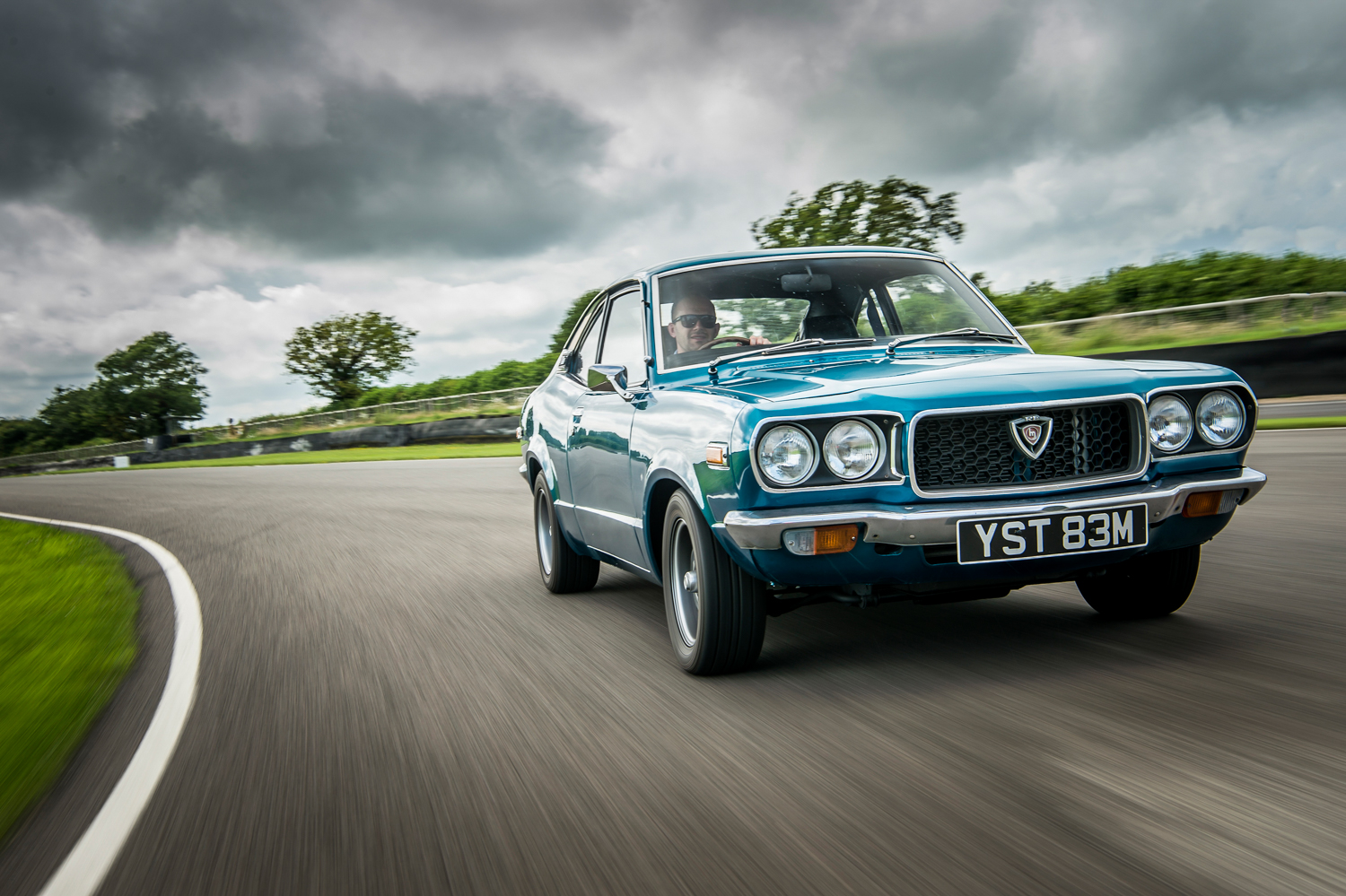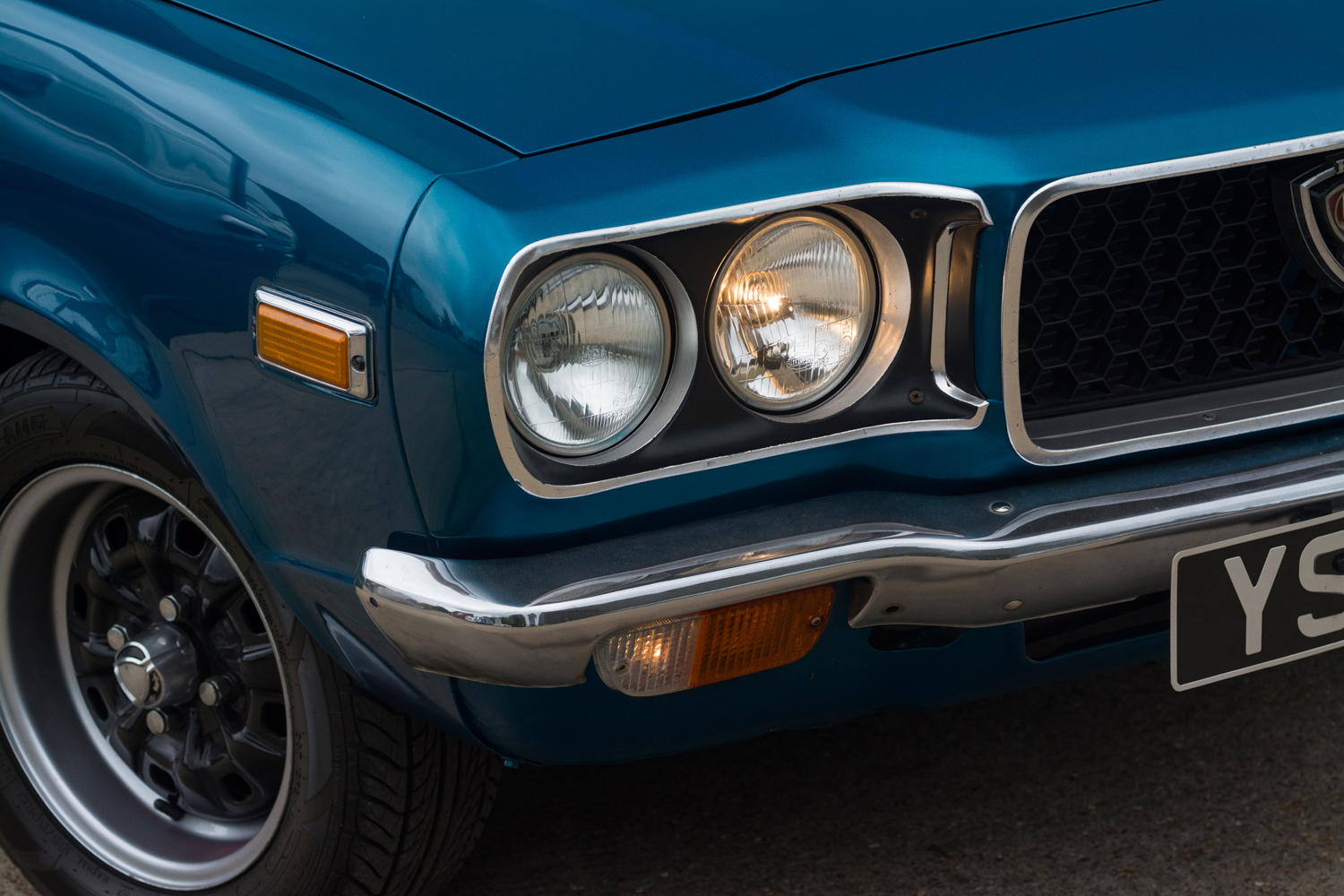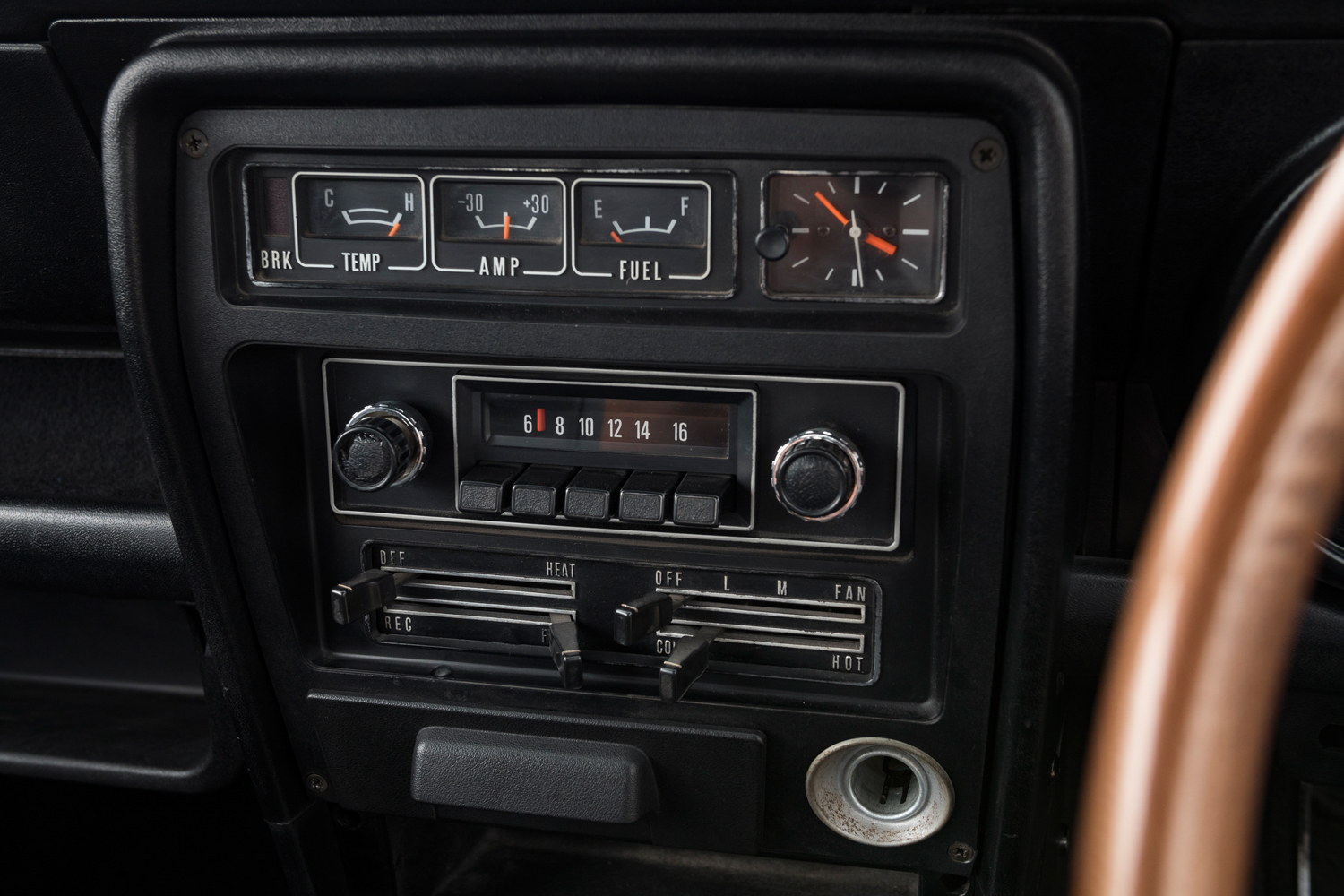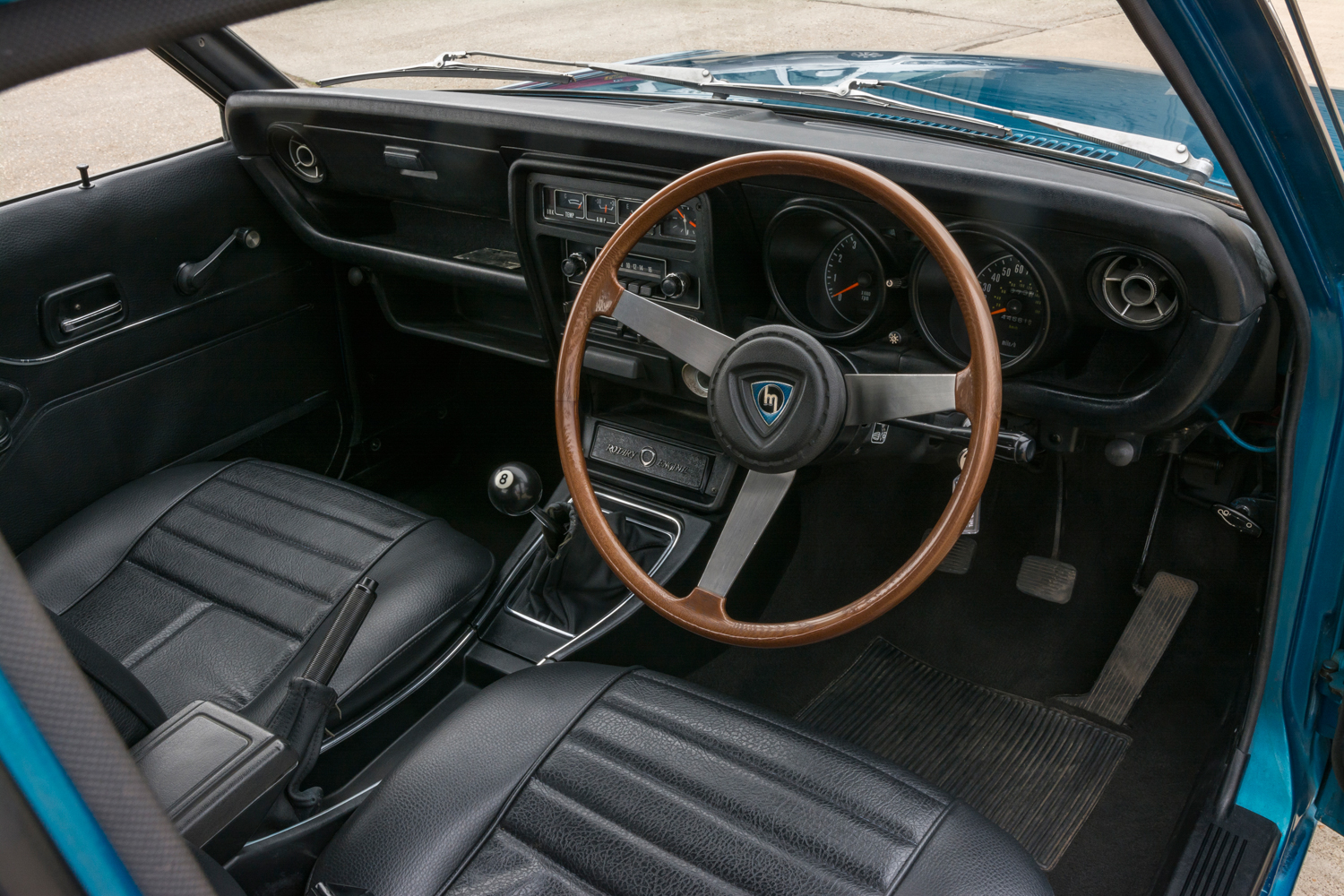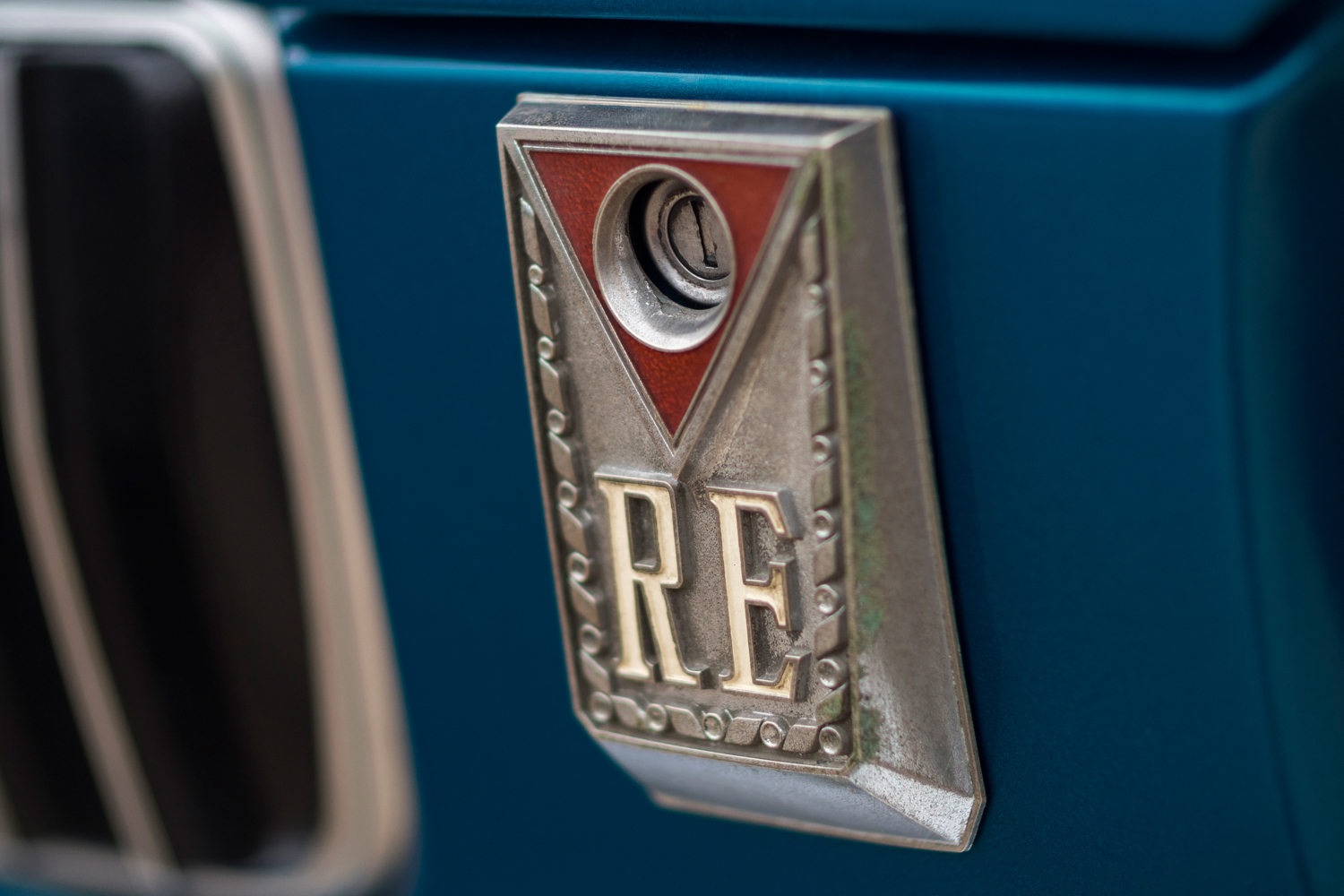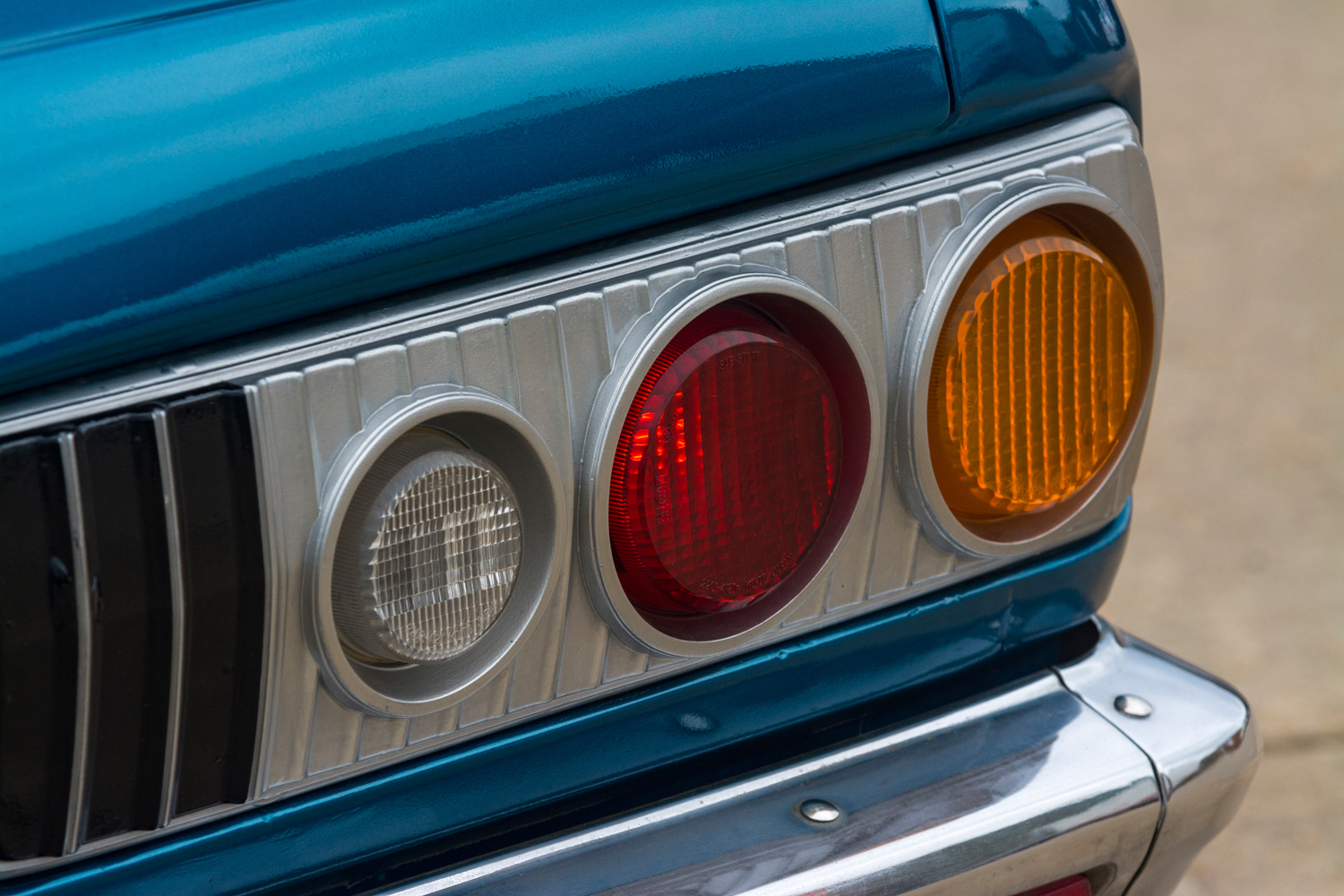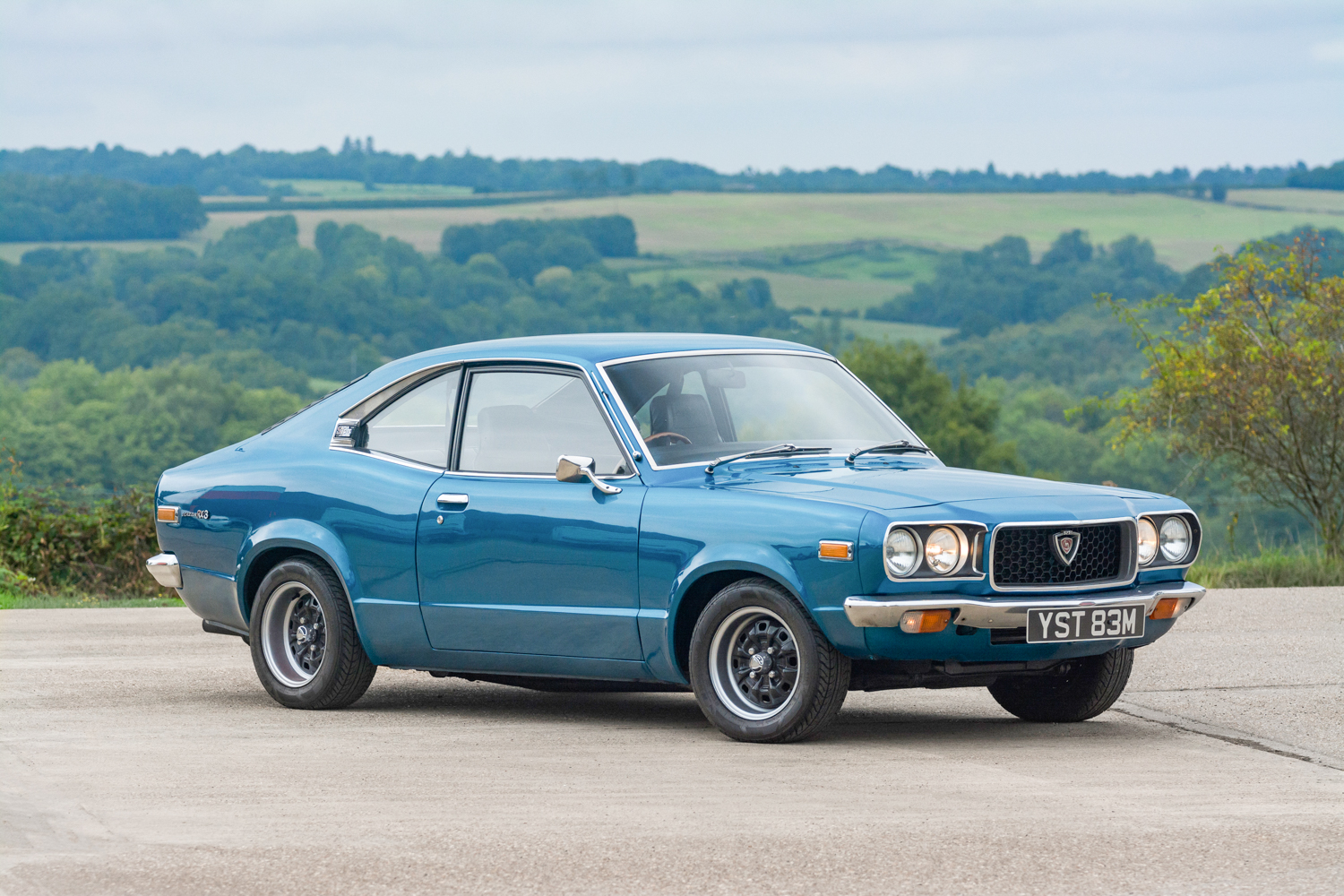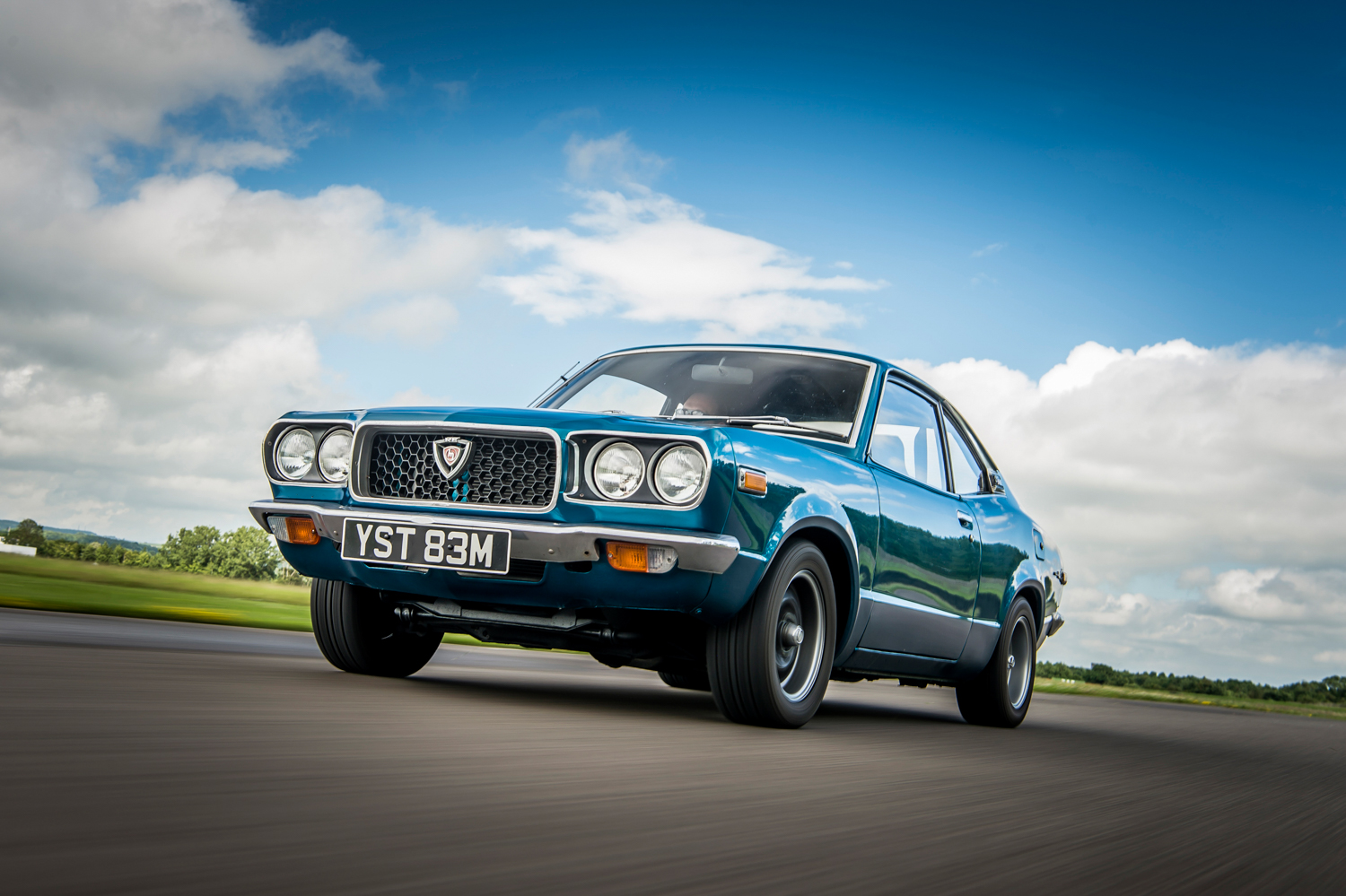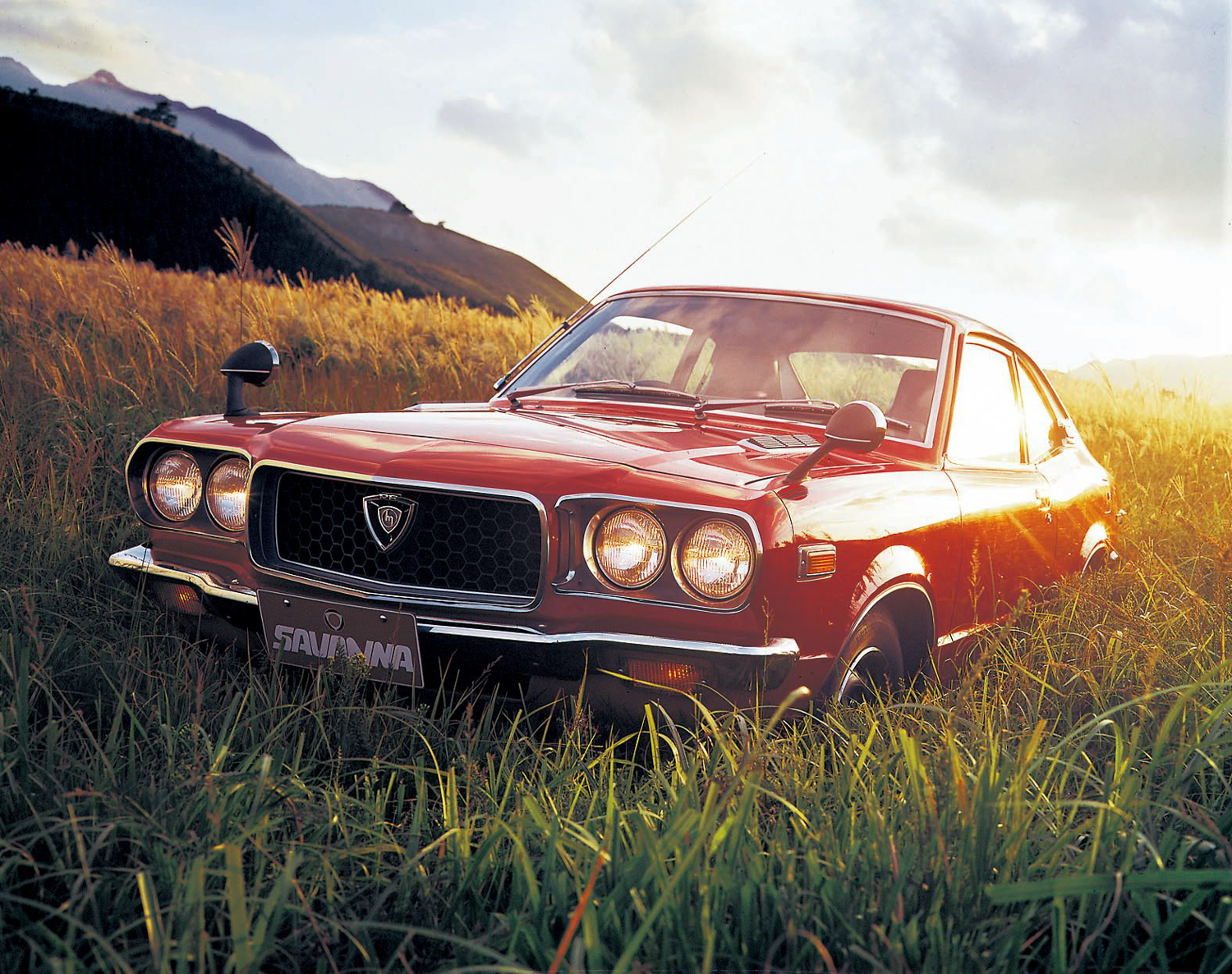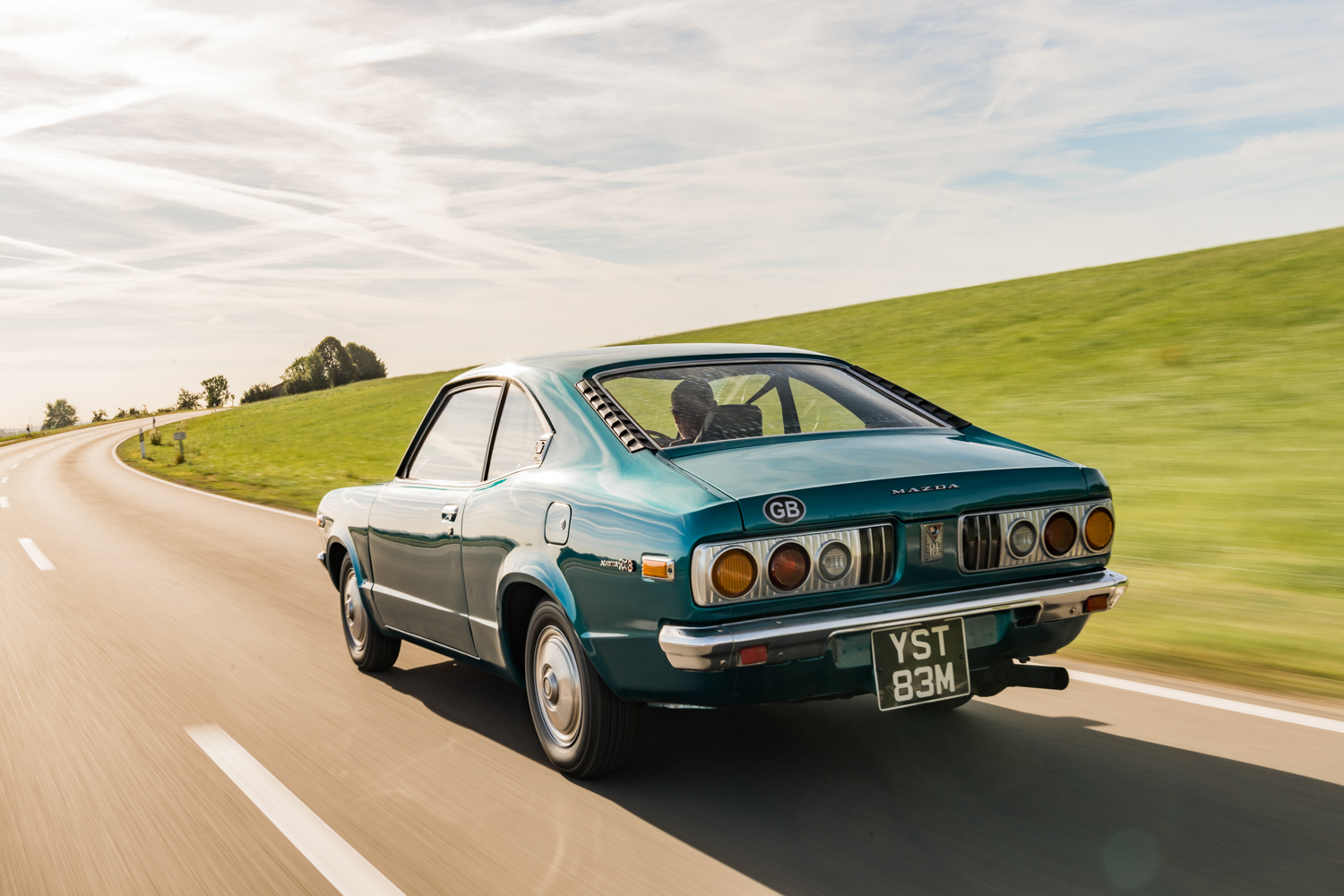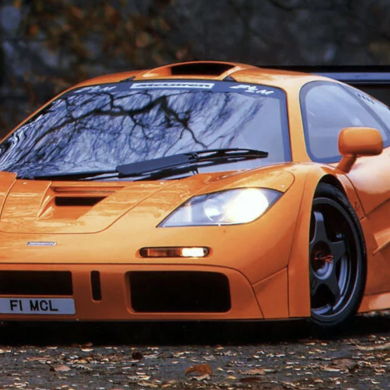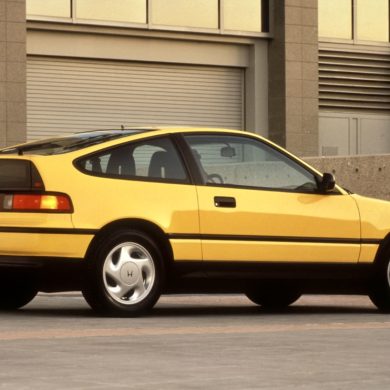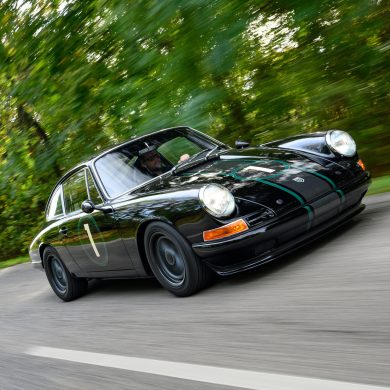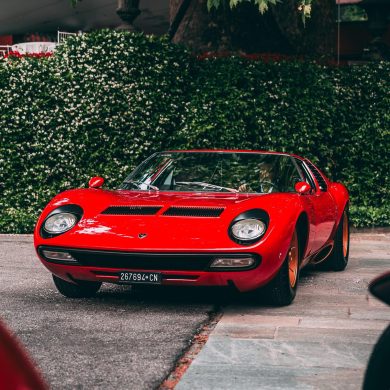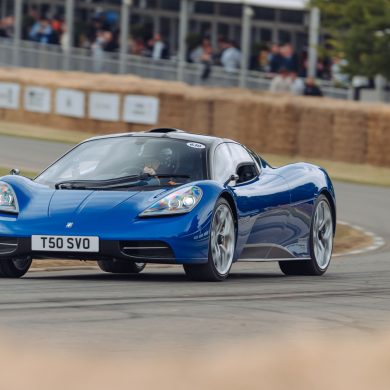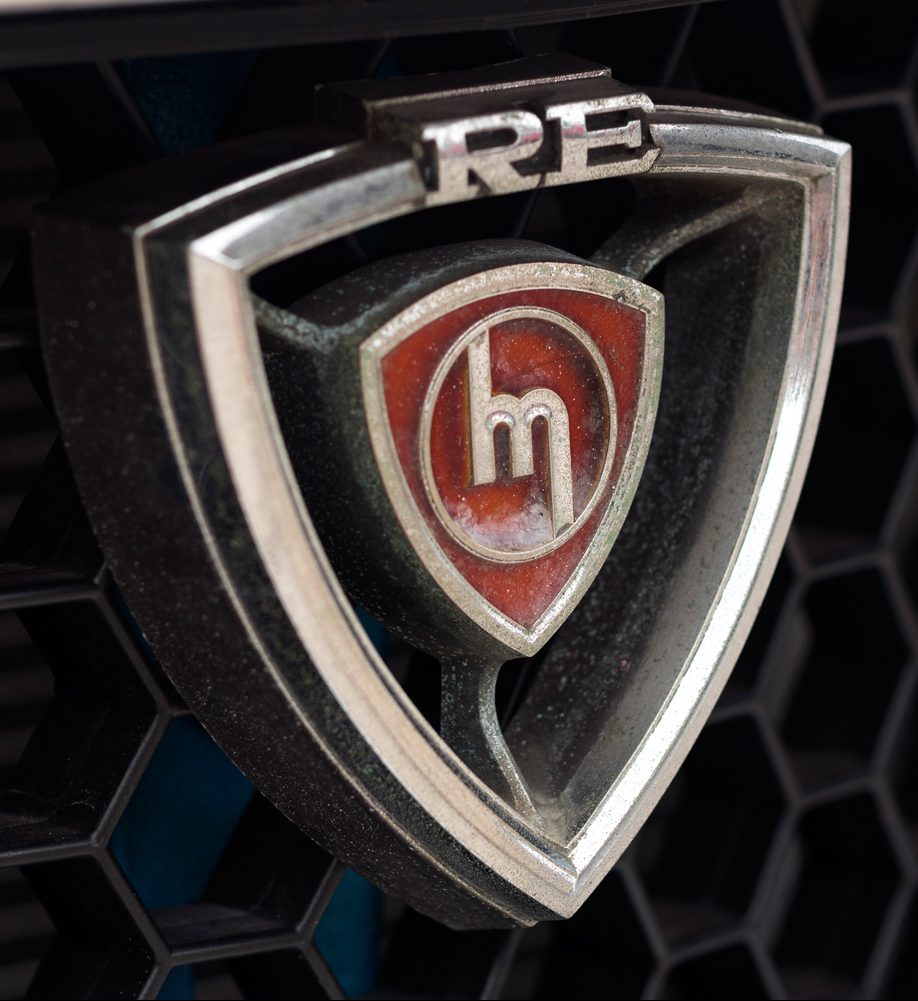
Not only that, its success on the racetrack led the way for the accomplishments of the later and more famous RX-7. By the time production came to an end in 1978, 286,757 RX-3s had been produced – making it the best selling Mazda rotary outside of the RX-7. Additionally, the piston engine versions, called the Mazda 808, Mazda 818 or Grand Familia depending on the market, were also popular and adding lots more vehicles to the sales tally. And while it was the two-door coupe that was the most popular and is the best remembered today, the RX-3 was offered in coupe, saloon and estate body styles – making it the first Mazda rotary estate car.
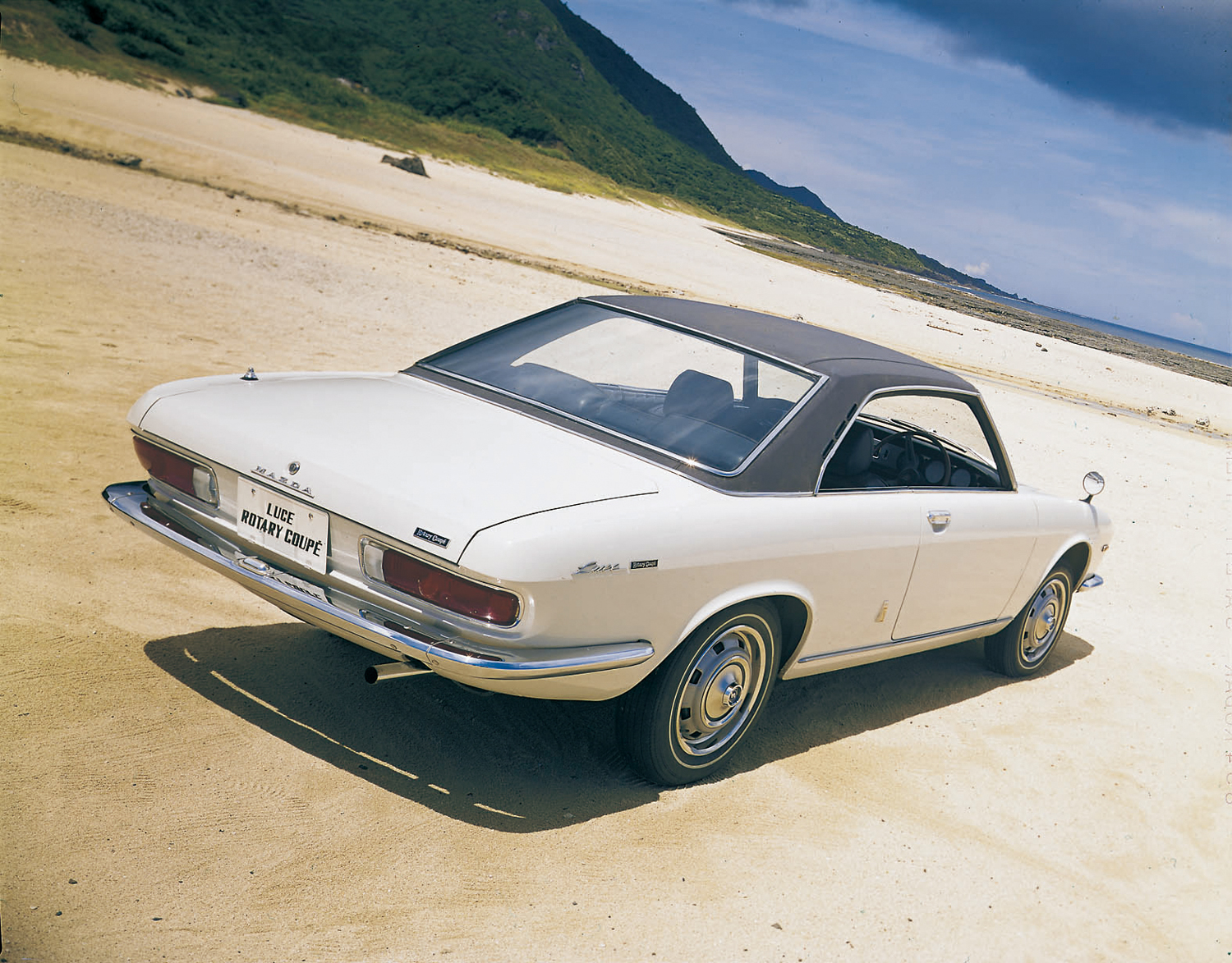
Having introduced the stunning Cosmo 110S sports car in 1967, followed by the diminutive R100 Familia Coupe in 1968 and the elegant Bertone designed R130 Luce Coupe in 1969, Mazda then introduced the RX-2 Coupe in 1970. The first year of the new decade also saw the first rotaries exported to Europe and the United States, and thanks to this line up of Wankel engine powered coupes, by the end of 1970 cumulative rotary production had reached 100,000 units. The 1970 Tokyo Motor Show had also seen Mazda display the radical Mazda RX-500 concept car, unlike anything seen before, its pure futuristic design was a showcase for both the rotary engine and safety technology. A wedge shaped, mid-engine, rear-wheel drive sports car with forward opening butterfly doors its multi-coloured rear strip lights indicated whether the car was slowing down, cruising or speeding up by changing color. The rotary 10A engine was accessed by gullwing opening engine covers and this supercar concept exemplified the technical prowess and boldness of Mazda and its rotary engine technology.
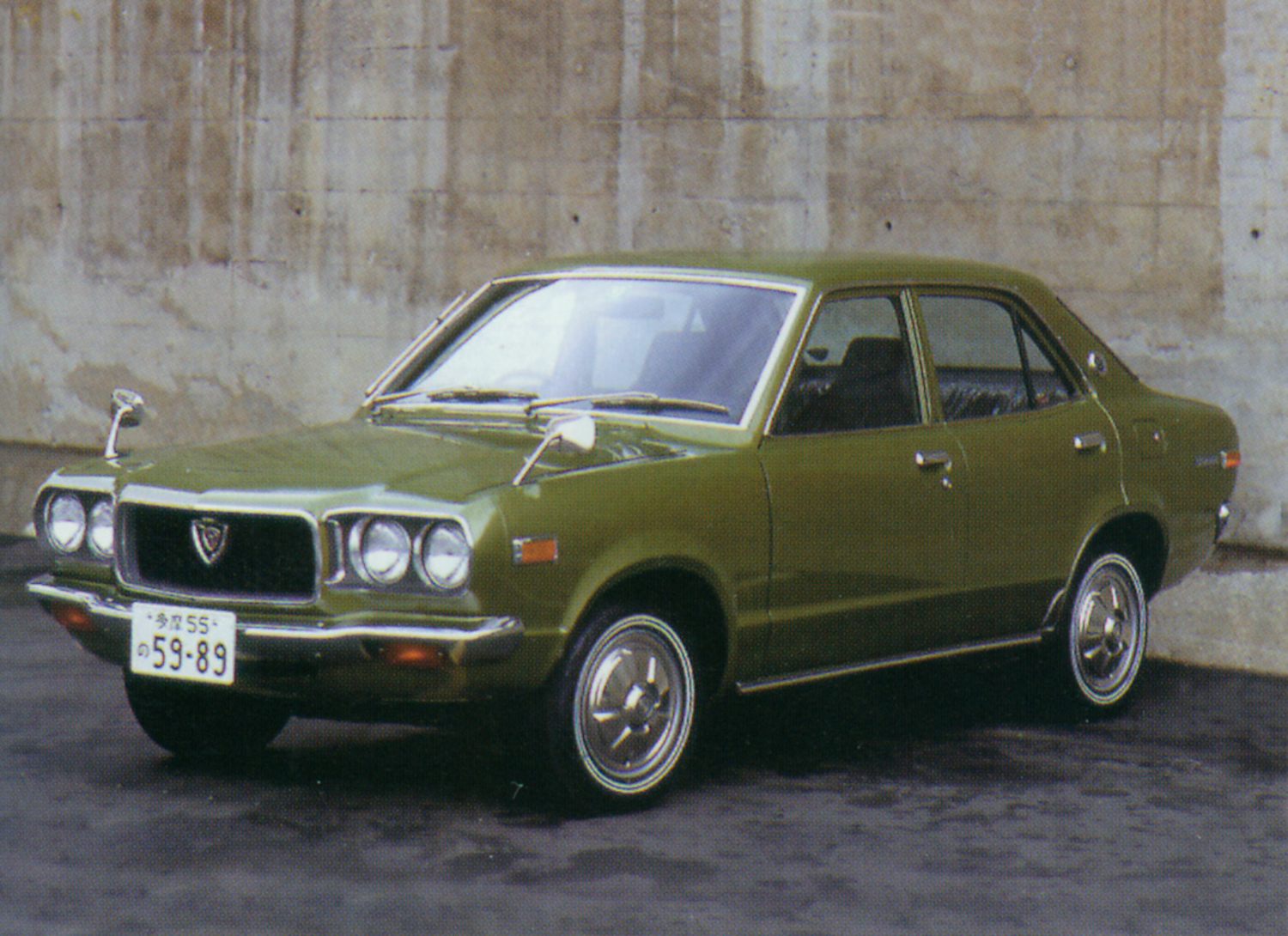
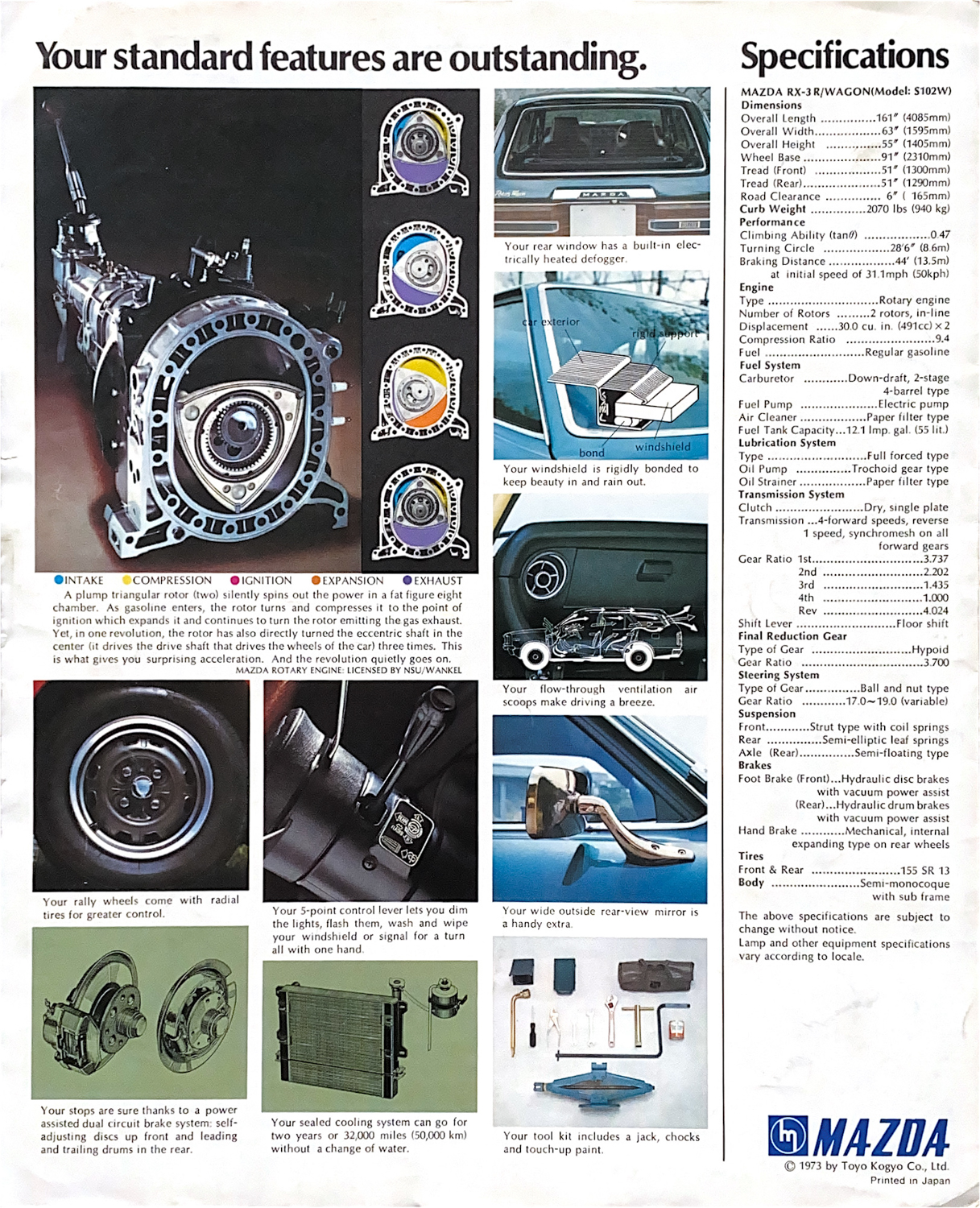
In order to fully understand the global picture, you first have to get your head around the naming strategy of the newest car in the line-up. Simply the rotary took the Savanna name in Japan, while export versions proudly wore the RX-3 moniker. Japanese piston engine cars wore the Grand Familia badge, while exported cars were named the Mazda 808.
Even more confusingly, the famous Peugeot ownership of car numbers with a central zero that turned the Porsche 901 into the Porsche 911 in 1964, saw the Mazda 808 become the Mazda 818 in Europe and the UK, while Australian and U.S. cars retained the 808 naming, although later North America 1.3-litre versions were called the Mazda Mizer from 1976! A version of the 808 was even licensed to Kia for production as the piston engine Kia Brisa K303.
Externally, the rotary RX-3 and piston Mazda 818 were distinguished by different grilles and headlights, with the RX-3 having twin round headlamps and the 818/ Grand Familia using square lamps or single round lights. Plus, the unique rotor shaped badges on the RX-3 left no doubts to the type of power unit under the bonnet. Launched in September 1971, the RX-3 coupe, saloon and estate all featured the 982-cc 10A engine, while U.S. market cars featured the more powerful 1,146-cc 12A engine. From 1972, the Savanna GT went on sale in Japan with the larger 12A engine, which was also introduced into other markets alongside the 10A versions, until the 10A was discontinued in 1974. By 1976 exports to Australia and New Zealand had stopped, but the car remained on sale in Japan and the United States through to the end of production in 1978. Small visual detail changes mark out the 1971 to 1973 Series I cars from the later 1973 to 1978 Series II and Series III versions, with the sharper nose and grille the obvious stand out feature of later models.
Arriving in the UK in 1972, the Mazda RX-3 and 818 range featured a saloon and a coupe for each model, with the £1,633 RX-3 Coupe costing £335 more than its piston engine 818 sibling. In 1973, an estate RX-3 and 818 joined the line-up, but the RX-3 estate only lasted until 1974 before being dropped from the UK line-up. Updates across the range in 1975 included improved upholstery, tinted glass and the option of metallic paint for the first time. RX-3 sales stopped in the UK in 1976, however the Mazda 818 estate stayed in the line-up until 1978, with the last saloons and coupes being sold in 1979.
Tested by Motor Magazine in 1973, the 982-cc 110bhp 10A powered RX-3 coupe had a 0-60 mph performance of 10.2 secs and over the duration of their 1,220-mile road test they averaged 24.9 mpg praising the RX-3 for its good performance, slick gear change, solid build quality and nice controls. Testing the 1,272-cc, 4-cylinder, 81bhp Mazda 818 Saloon they recorded a more leisurely 15.3 sec 0-60 mph time, while fuel consumption of 32.7 mpg highlighted the piston engine’s slightly more economical cruising ability. Yet despite the lower price, in 1973 the UK importer sold three times more RX-3s than Mazda 818s.
The other crucial chapter the RX-3 played in the Mazda story was its success in competition. Having raced the Cosmo and R100 Coupe in Europe at famous events like the Marathon de la Route and the Spa 24 Hours, Mazda focused on racing at home in Japan – taking on the Nissan Skyline in domestic racing.

The new RX-3 made its mark from the outset, taking its first victory at the Fuji Tourist Trophy meeting in December 1971, while equipped with the 12A engine, in May 1972 RX-3s took a historic 1-2-3 finish in the Fuji Touring Car Grand Prix.
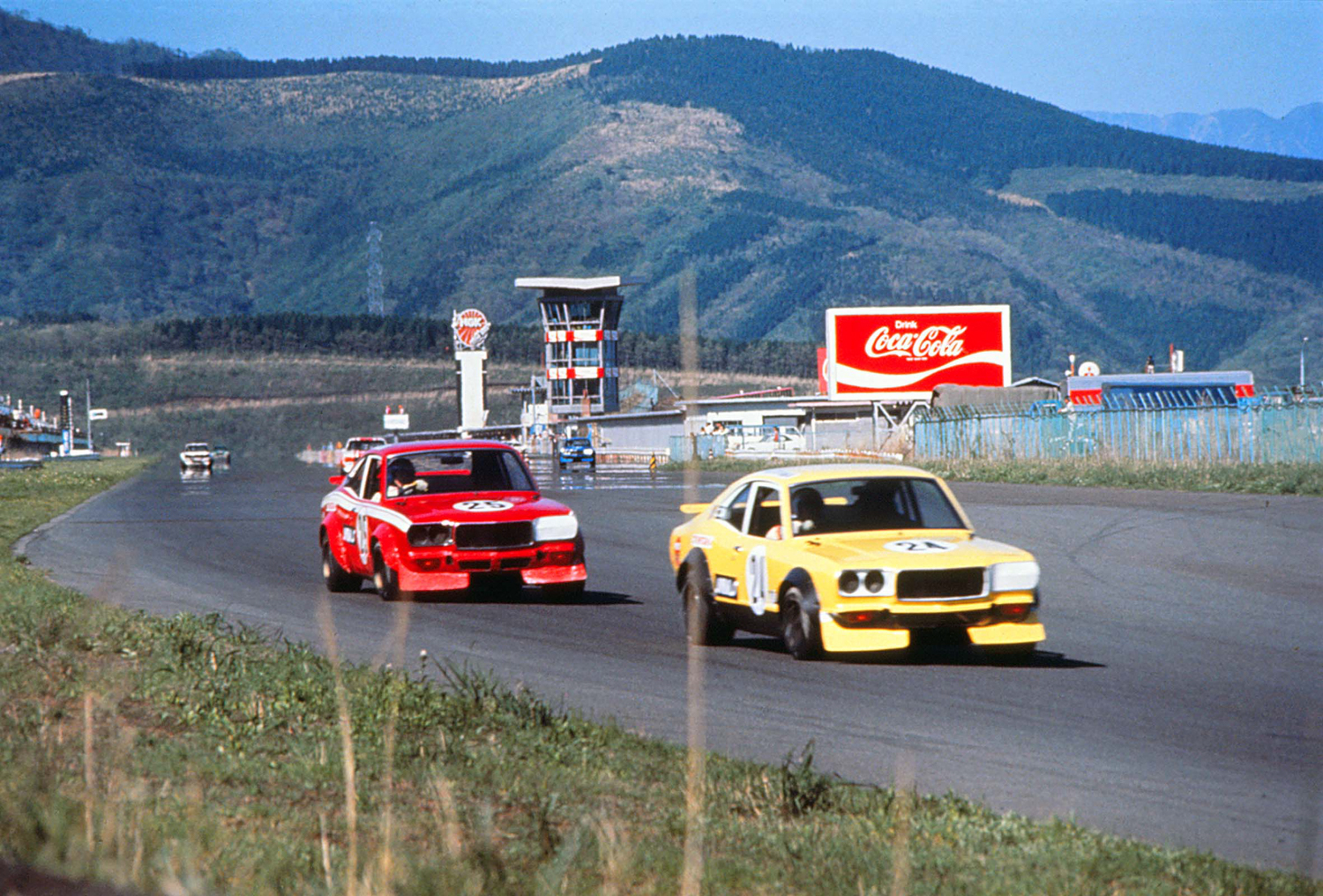
In spite of the battle for supremacy with Nissan reaching new levels of intensity, RX-3s went on to take the Fuji Grand Champion Touring Car class championship title in 1972, 1973 and 1975. After six seasons of success, at the JAF Touring Car Grand Prix of 1976 the Mazda RX-3 claimed its 100th domestic Japanese racing victory.
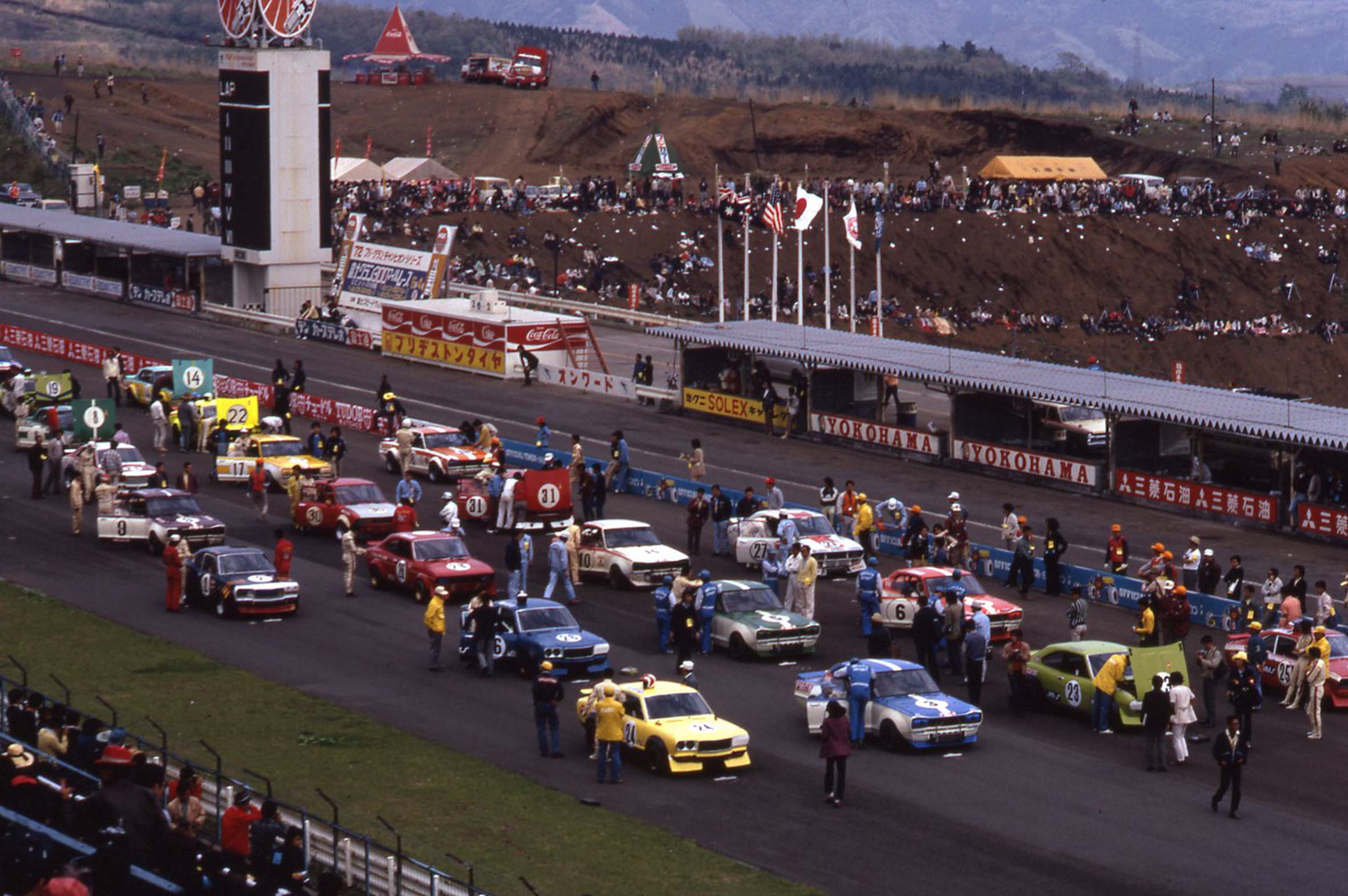
However, it wasn’t just at home that the RX-3 was making its mark, the RX-3 became a popular and successful racecar around the world – competing in the USA, Europe and Australia. In Australia’s most famous race, The Bathurst 1000, a Mazda R100 coupe made its debut in 1969 and RX-2s appeared in 1971 before the 1973 race saw an entry of three RX-2s and three RX-3s – one RX-3 finished second in class and ninth overall.
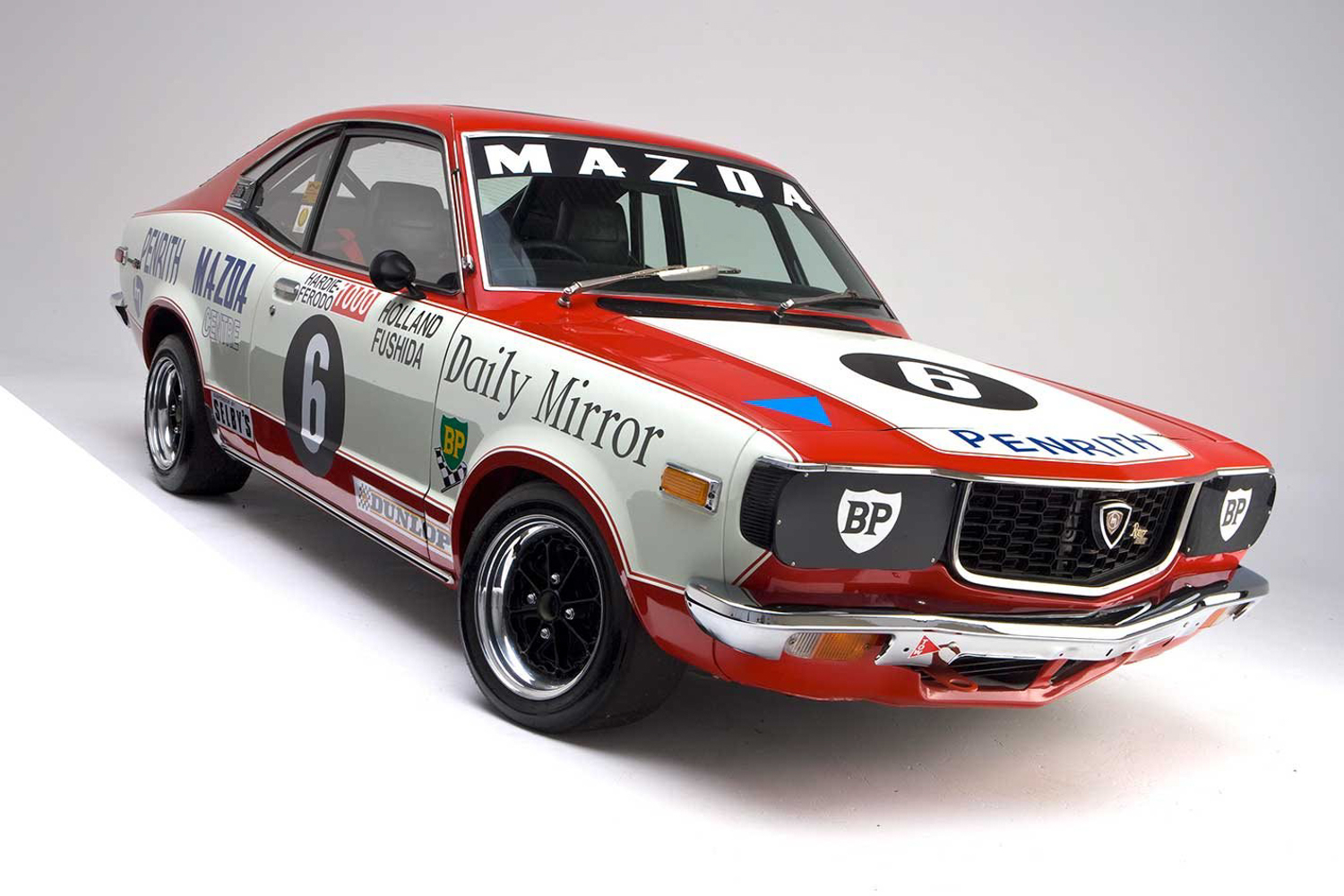
However, it was 1975 when the RX-3s racetrack success really cemented the rotary engine and Mazda into the psyche of antipodean car fans, as Don Holland and Hiroshi Fushida won their class and came 5th overall at Bathurst with only V8-powered Holdens ahead of them.
In the United States, the RX-3 was also popular and appeared in the famous Daytona 24 Hours in the hands of privateers with one car finishing 14th overall and 3rd in class in 1975 with only Porsches and Ferraris ahead of it. In 1978, Mazda’s first factory supported entry saw two Gatorade-livered RX-3s enter the Daytona 24 Hours with the lessons learnt helping Mazda’s return in 1979 with the new RX-7 where the team took victory in the GTU class – the first of more than 100 IMSA victories for the RX-7 in just 12 years.
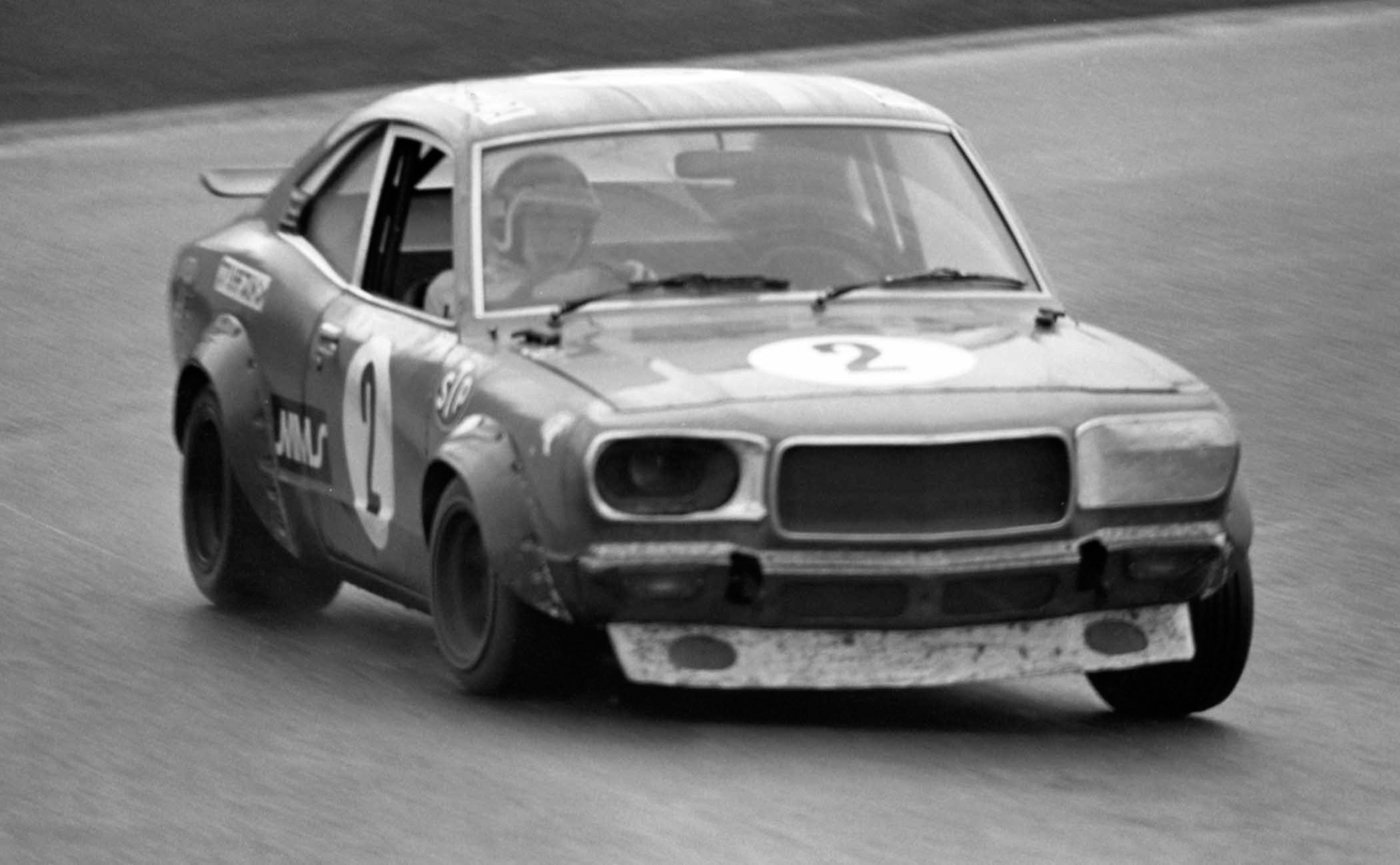
The RX-3 was just as popular in European saloon car racing where it was campaigned by privateers in the European Touring Car Championship, including the flagship Spa 24 Hours. In the UK, an importer who assisted racing customers get hold of RX-3s, helped to make the car a very popular choice in production saloon and touring car racing, and just as it was in other parts of the world, the RX-3 was also popular in amateur rallying. The Mazda RX-3 even raced at Le Mans, as in 1975 a privately entered French RX-3 took part in the race, having failed to qualify in 1974.
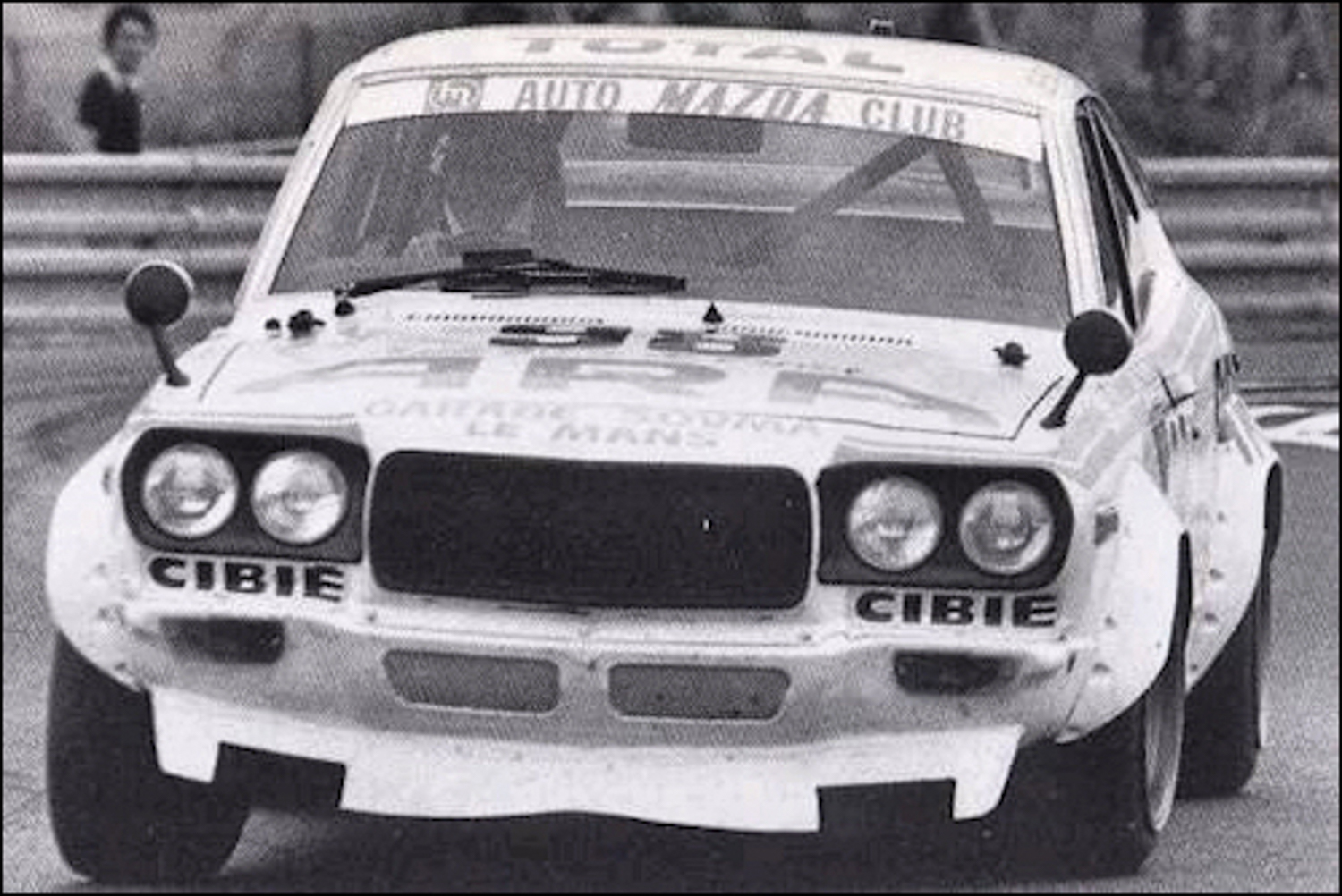
Today, the Mazda RX-3 remains a popular choice for historic racers around the globe, while the car has gained cult status in the tuning, drifting and even drag racing worlds. Thanks to its success in competition the Mazda RX-3 was a car that successfully extended the Mazda brand, promoted the rotary engine and helped Mazda begin to establish its reputation for being a producer of great to drive cars.
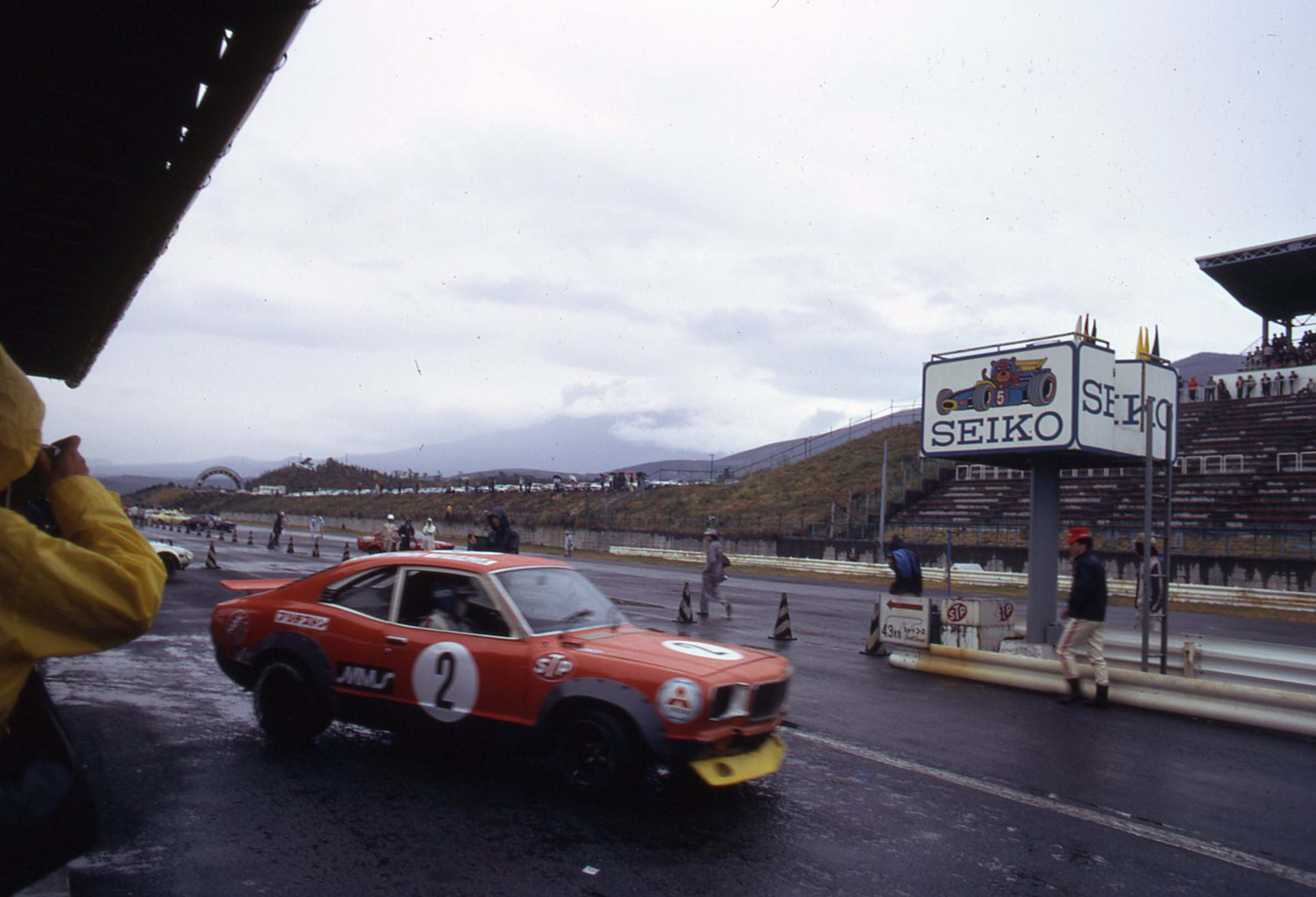
When the RX-3 was launched in 1971, cumulative global Mazda rotary sales sat at 200,000 cars. From 1972 onwards the RX-3 outsold the RX-2 and peak RX-3 sales arrived in 1973 with 105,819 cars in that year alone, by which point total rotary sales had reached 500,000 cars. From 1974 the bigger RX-4 outsold the RX-3, but it was the smaller and sportier RX-3 that was doing the winning on the world’s race tracks and proving the rotary engine in competition.
Today, the RX-3s total sales of 286,757 make it the second best-selling rotary of all time behind the 811,634 combined sales of three generations of RX-7. Half a century on the RX-3’s fame may have been eclipsed somewhat by the RX-7, but this hard-working rotary and its less glamorous piston engine siblings did much to feed Mazda’s global sales expansion in the early ’70s, while the RX-3’s success in competition was a hugely important early chapter in a story that led all the way to Le Mans victory in 1991.
Still loved by owners and tuners the world over, the RX-3 rightly has a cult status amongst rotary aficionados. Happy Birthday RX-3.



